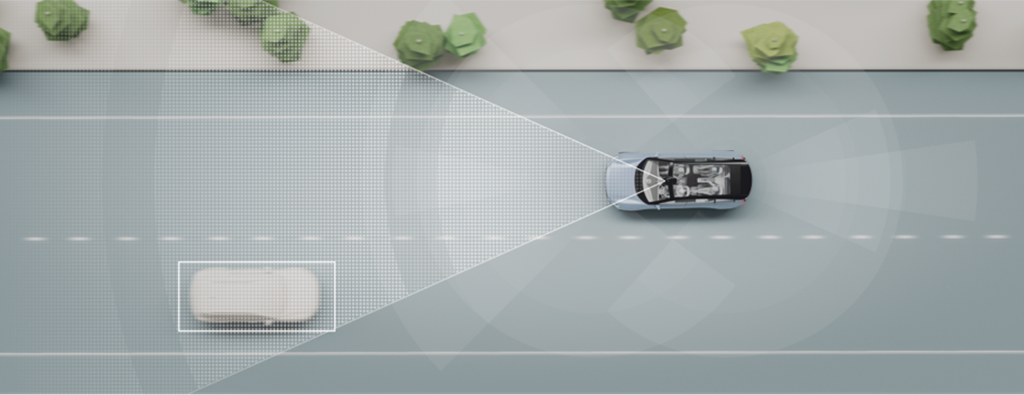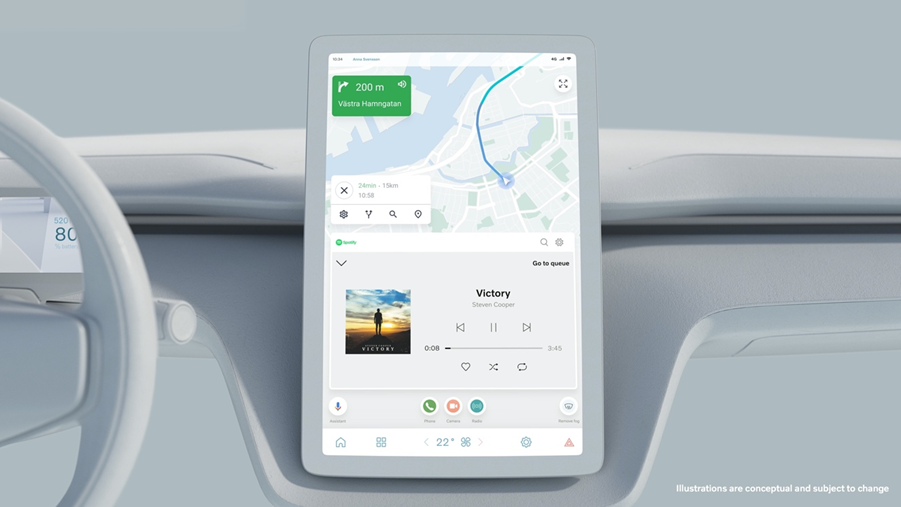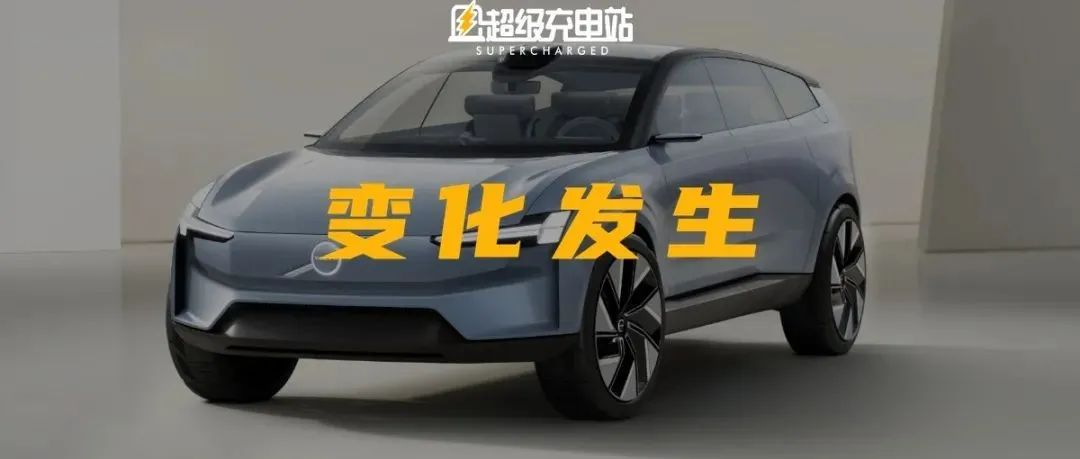Author: Chang Yan
Last night, I just finished my trip to the Haikou Auto Show and was reading the content of the 2022 WeChat Open Class on my way back to Beijing.
Suddenly, I realized that we have ingrainedly equated WeChat with “chatting tools” in our minds, but it has been constantly changing its attributes and domains. It is both a news channel and a payment method.
Just like the Hainan that I just bid farewell to and the auto show that ended, they have long ceased to be mere tourist destinations and industry gatherings. They have respectively become China’s economic special zones and ways of life.
The more familiar we are with something, the more likely we are to overlook its changes.
Take Volvo, for example.
When it comes to this brand, it seems even my input method will automatically associate it with the word “safety.” However, many people may think that this only means the level of body structure and manufacturing technology, and that they have little to do with the hottest smart technologies nowadays.
But you may be underestimating Volvo, which has produced many sports cars and has been taking the lead in improving energy efficiency.
You may not know that as early as 2021, Volvo has announced that it will fully transform into an all-electric car company by 2030.
What’s even more surprising is that at CES 2022, Volvo has just announced the world’s first set of highly autonomous driving function that allows users to use it without supervision during operation.
Yesterday morning Beijing time, we conducted an exclusive interview with Martin Kristensson, head of Volvo’s autonomous driving and mobility, asking some questions that you might also be curious about.
Let Volvo’s cars handle everything
In 2021, accidents related to autonomous driving systems of many brands have taught us two lessons:
-
Many similar systems still require human supervision after being activated.
-
Improper use of autonomous driving systems can become a major safety hazard during driving.
But Volvo does not agree with these “industry norms.”
 # Volvo’s upcoming autonomous driving feature is called Ride Pilot, which is referred to as “highly automated driving function” because once the autonomous driving function is activated, everything is handled by Volvo’s cars.
# Volvo’s upcoming autonomous driving feature is called Ride Pilot, which is referred to as “highly automated driving function” because once the autonomous driving function is activated, everything is handled by Volvo’s cars.
Martin said, “Ride Pilot allows the driver to completely relax and do things like eating breakfast or watching a movie.”
And such an autonomous driving system “will truly achieve the safety of the vehicle”.
The basis for achieving such capabilities is extremely high computing power and a rich sensor layout.
Ride Pilot’s computing core still comes from Volvo’s partner Nvidia. “We use Xavier and Orin, and we will continue to cooperate with Nvidia for chip updates in the future.”
To achieve more precise detection, Ride Pilot will also upgrade the main sensor to Luminar’s lidar.
“But the sensor system on the entire vehicle will be more diverse and complex.”
“We firmly believe that using more sensors, and using different types of sensors, will truly achieve the safety of the vehicle, because we know that sometimes our eyes make mistakes and our ears will miss something. It will be very difficult to escape different types of sensors.”
“So we use a series of different sensors, equipped with 5 radars, 8 cameras, 16 ultrasonic sensors, and a high-precision map, which can also be regarded as another sensor.”
It should be noted that the ODD (autonomous driving design operating area) of this system will have a certain speed limit, but it has not yet been announced.
Will autonomous driving take safety to a new level?
It should be noted that this system is not a simple technology concept, but will soon be produced and delivered.
“After the high-speed highway safety test of Ride Pilot is passed, Volvo plans to provide subscriptions on the upcoming new pure electric flagship SUV and release this new model later this year.”
The term “subscription” is actually very interesting, not only reading very “software,” but also implying high deployment speed and rapid cloud interaction.
After the vehicle is equipped with more sensors and more advanced chips, it can definitely increase more active safety functions to avoid more accident risks, which is what everyone has already thought of.However, what everyone did not anticipate is that online upgrades and big data in the pure software field could also bring higher security performance.
“We know that most traffic accidents are caused by human errors or mistakes. If vehicles are to achieve higher levels of autonomous driving, more support needs to be given to the driver system so that the vehicle and traffic can become safer and lives can be saved,” said Martin.
Ride Pilot collects and processes real-time traffic data from users’ vehicles to develop new safety technologies and continuously upgrade vehicle safety, provided that users give permission and authorization.
This means that the evolution of Ride Pilot’s functionality will break through the realm of engineers, and all user data can benefit this system and all other users. Traffic data from Volvo users around the world will be collected and analyzed. “Compared to road tests conducted with limited test cars in the past, this speed will be greatly accelerated,” said Ödgärd Andersson, CEO of Zenseact, the autopilot software development company under Volvo Cars, adding that this acceleration could even be reduced from “several years to several days.”
Software is the key to modern safety DNA
The difficulty car companies face in transitioning to the new era mainly lies in software.
Mats Moberg, head of R&D at Volvo Cars, directly stated that “Volvo Cars has been committed to safety since its inception, which is also the cornerstone of the company. In today’s realm of safety, software has become the key to modern safety DNA.”
“Therefore, we are more concerned about how Volvo’s development of software will complete the transition to autonomous driving in terms of efficiency and organizational structure,” said Martin.
In the press release, Volvo said that “Zenseact, Volvo Cars’ autonomous driving software development company, will jointly develop with internal teams of Volvo Cars and development teams from technology company Luminar.”
Therefore, in the interview, I specifically asked Martin whether this means that Volvo still relies more on its supplier’s ability in terms of software development.
But Martin quickly corrected me and said, “They are partners to us, not just suppliers.””As an automaker, Volvo will take different approaches in certain areas, including integrating some aspects and conducting independent research and development in others. For Volvo, we choose to closely collaborate with partners. Obviously, for core software such as autonomous driving, Volvo needs to guide and master more of the software.
On Volvo Tech Day, it was announced that Volvo Cars will deploy its in-house integrated vehicle system, VolvoCars.OS, in future products. VolvoCars.OS will become the system name for electric vehicle products, integrating a variety of systems on both the car and cloud sides to create a unified and coherent software operating environment.
“As we gradually shift towards software-driven value generation, more value will be created through software,” added Martin.
But what Chinese consumers are most concerned about is when this system will enter China. “Ride Pilot has completed initial verification in Europe and is preparing for release in the United States,” said Martin. “Volvo has already partnered with Zenseact to test autonomous driving functions on Swedish roads and to collect data in Europe and the United States. Volvo plans to start road testing in California in the middle of this year, as its climate, road conditions, and regulatory policies provide a favorable environment for autonomous driving. As for entering China and conducting tests, we haven’t discussed the timing yet, but I also hope to start work in China as soon as possible because China is already a top market for our automotive business, and its traffic and road conditions are very suitable for this feature’s application.”
Adapting to China’s driving ecology and software service functions is currently seen as the key to this process, particularly in the state of China’s emerging software and hardware ecosystem for autonomous driving services. “On the hardware side, I don’t think it will be replaced. We are currently developing hardware with Chinese partners for global hardware development, but in terms of software and services, it may need to be replaced. For example, we may need to use high-precision maps developed by Chinese partners, which is different from international solutions.”

The statement sounds so familiar – on the basis of advanced software and hardware, adapting to China’s unique traffic environment and localizing the autonomous driving function is a common problem for all international automobile giants represented by Volvo.
Fortunately, the answer to this problem is believed to be not far away from us.
After all, behind the rapidly developing and exciting autonomous driving technology, the most essential and prioritized problem to be solved is still the familiar thing that people have been focusing on since the birth of modern cars – safety.
And this is the DNA that Volvo has imprinted in its bones.
This also echoes the beginning of this article: seemingly commonplace and familiar things always contain constant changes and progress.
This article is a translation by ChatGPT of a Chinese report from 42HOW. If you have any questions about it, please email bd@42how.com.
